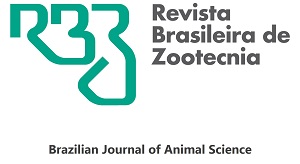O objetivo deste experimento foi comparar os teores de gordura e colesterol e o perfil de ácidos graxos (AG) do músculo Longissimus dorsi (MLD) de bovinos Nelore (NE), Nelore x Sindi (NS) e bubalinos Mediterrâneo. Foram utilizados oito animais (quatro castrados e quatro inteiros) por grupo genético (GG), em um total de 24 animais. O delineamento experimental foi o inteiramente casualizado, em um esquema fatorial 3 x 2 (três grupos genéticos e duas condições sexuais [CS]). Os animais receberam a mesma dieta e foram abatidos com peso vivo médio de 437,5 kg (± 3,4 kg). Os búfalos e bovinos ½ NS apresentaram menor teor de gordura na carne (10,8 e 12,5%, respectivamente) que bovinos NE (15,4%), bem como os animais inteiros (8,9%) em relação aos castrados (16,8%). Para o colesterol e os AG monoinsaturados não houve diferença entre GG e CS. Para os AG poliinsaturados (AGP), os búfalos mostraram concentrações superiores (9,55%) aos dos bovinos (7,27 NE e 8,95% ½ NS), bem como os animais inteiros (9,96%), quando comparados aos animais castrados (7,21%). Os búfalos e bovinos NE apresentaram maior concentração de AG saturados, 42,7 e 42,1%, respectivamente, em relação aos bovinos ½ NS (39,8%). A carne de búfalos e de animais inteiros apresentou menor teor de gordura e maior teor de AG poliinsaturados, mostrando que pode ser mais saudável ao homem.
ácidos graxos; búfalo; bovino; castrado; colesterol; inteiro





